How to Find, Use, and Create Instagram Reel Templates

Here’s how the Instagram Reels algorithm works in 2022, and what you can do to make the not-so-secret recipe work to your advantage.


Here’s how the Instagram Reels algorithm works in 2022, and what you can do to make the not-so-secret recipe work to your advantage.
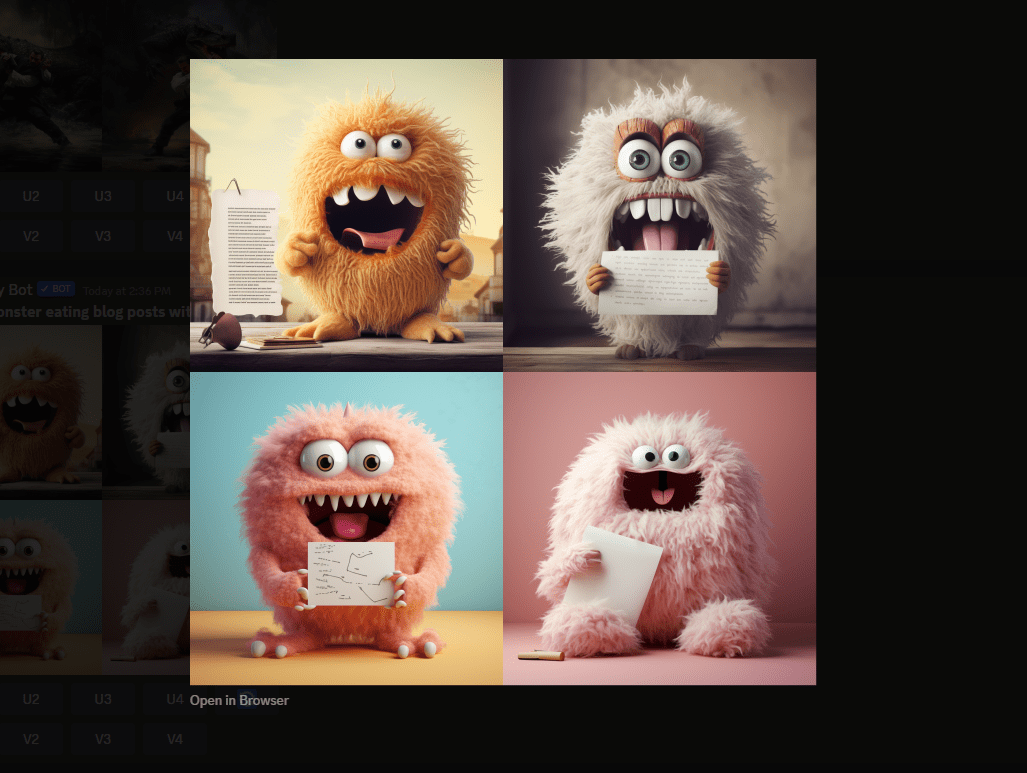
AI is everywhere.
You can use ChatGPT for enhanced data analysis and even to help with your copy, but there are other tools that you can use to enhance your SEO, including AI image generators.
You have a lot of options for these:
You don’t even need to replace your stock image site or photographer because there’s a place for all types of images in SEO.
AI can provide imagery that adds to your site’s user experience and transforms your blogs from unengaging to fun and exciting.
However, AI-generated images have no copyright, so the user has no ownership. This means anyone can use the images a user generates.
And if you follow Google’s image guidelines, you may even drive some traffic from Google Images to your site.
It’s also possible to reuse some of this content on your social media accounts like Pinterest and other channels that don’t rely on search traffic.
Here are just a few of the ways that AI image generation can boost your SEO and content:
Google’s John Mueller already confirmed two things:
By using AI to generate unique images, you can avoid stock photos that may be used on multiple websites, giving your site an original edge.
While you can mix stock and AI images, you can benefit from truly unique images that no one else has on their site if you use a bot like Midjourney.
If your image output too closely resembles an individual’s artwork that was used to train Midjourney, you are open to liability. Midjourney’s terms of service makes clear they will not legally or financially protect you should there be a legal dispute.
For example, I used the prompt: “Create a fuzzy monster eating blog posts with a piece of paper in its mouth with lorem ipsum on the page” to generate the image below.






Imagine that the monster is “Google” after the Helpful Content Update, and it’s eating everyone’s great content as rankings tumble for many sites.
What a fun, shareable, and unique image, right?
You can also go deeper into image personalization with AI, adjusting your prompts and having it create relevant images for you.
Marketers love personas. You can use personas to dig deep into the minds of your ideal customers or segments of customers. AI can help you create images based on user:
Image personalization can indirectly influence your site’s SEO with improvements in user dwell time and engagement.
For example, if you were optimizing for a business website and the company focuses on businesswomen in the 2o – 40-year-old bracket, you can use a unique image like the one below:
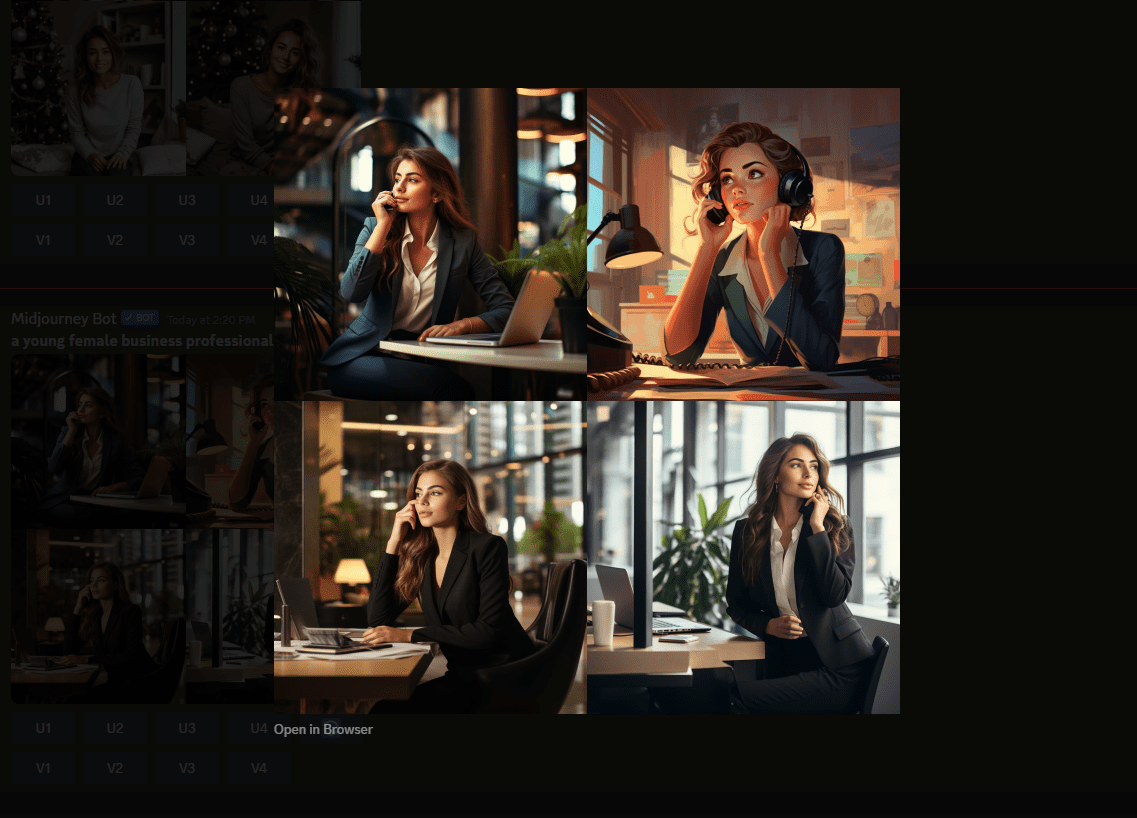





You can also personalize the image further. Instead of a businesswoman, let’s focus on a businessman who is on the phone closing a deal.






Sure, you can find many stock photos that look like this, but you can instantly change the photo by asking for a different suit color, a younger or older man, different features, and anything you want.
Your image personalization can really hit on the pain points of your personas to make each image relatable.
Infographics are still very shareable and can lead to very valuable backlinks.
The problem? They’re tedious and expensive to make.
AI can help you create generic infographics that you’ll need to fill out in Photoshop or something similar.
Visual data is a lot of fun to make with a tool like Midjourney.
However, it is very tricky to get graphs and charts to work out if you’re looking for accuracy because there’s a lot going on. For example, I just prompted Midjourney to create an infographic for me.
See the results for yourself.
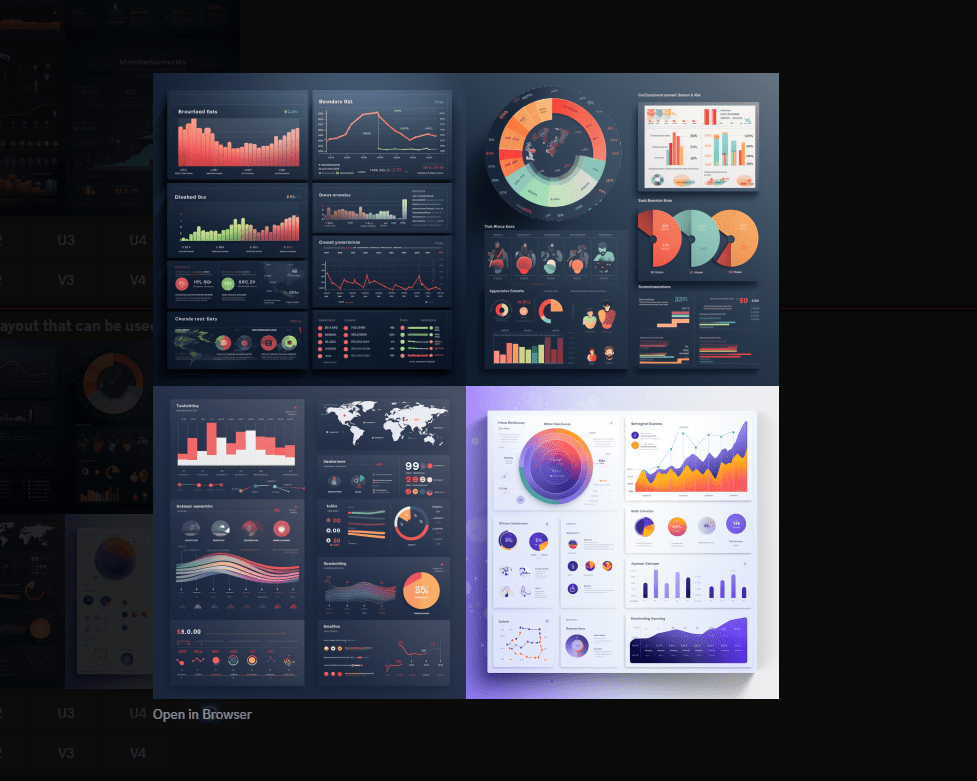





While the infographic is certainly beautifully made and far better than what I could make on my own, many prompts would need to be added for the graphs and charts to depict the data accurately.
However, if you don’t mind adjusting the prompts or don’t need accurate graphs and charts, you can create fast content assets that attract more links to your site.
Updating content is nothing new. If you’re not updating blog content, you’re missing out on the opportunity to have fresh content. However, updating images on your website can be costly and time-intensive.
You can now use AI to solve this problem in two different ways:
In Midjourney, you can update your old biography picture and ask it to spruce it up for you. You can even use a URL to prompt the generator. However, the platform will use the image as an influence and not reuse it in 100% likeness.
Automation and advanced applications using API would be a fun experiment. Imagine feeding in a blog URL and having AI create an updated variation of any images that are outdated.
New, better images may help boost your traffic from image search and improve your page’s dwell time – a win-win.
For many brands, finding the right images to complement their content can be challenging.
AI can step in to create images based on your keywords. Just add the keyword to your prompt and see what the bot spits out.
Why should you create images based on keywords?
Images play an important role in SEO. Google uses computer vision algorithms along with alt text to understand the content of an image.






This image was produced for the keyword “luxury bathroom ideas.”
AI image generators like Midjourney can be especially useful for long tail or unnatural keywords for which you may struggle to find images.
You can use AI-generated images as part of your A/B testing to see what type of imagery works best for your audience.
With Midjourney, you can use the “Vary (Strong)” option to create different variations of an image to see how well they perform.
I used this option to create four variations of our fuzzy monster image from above.
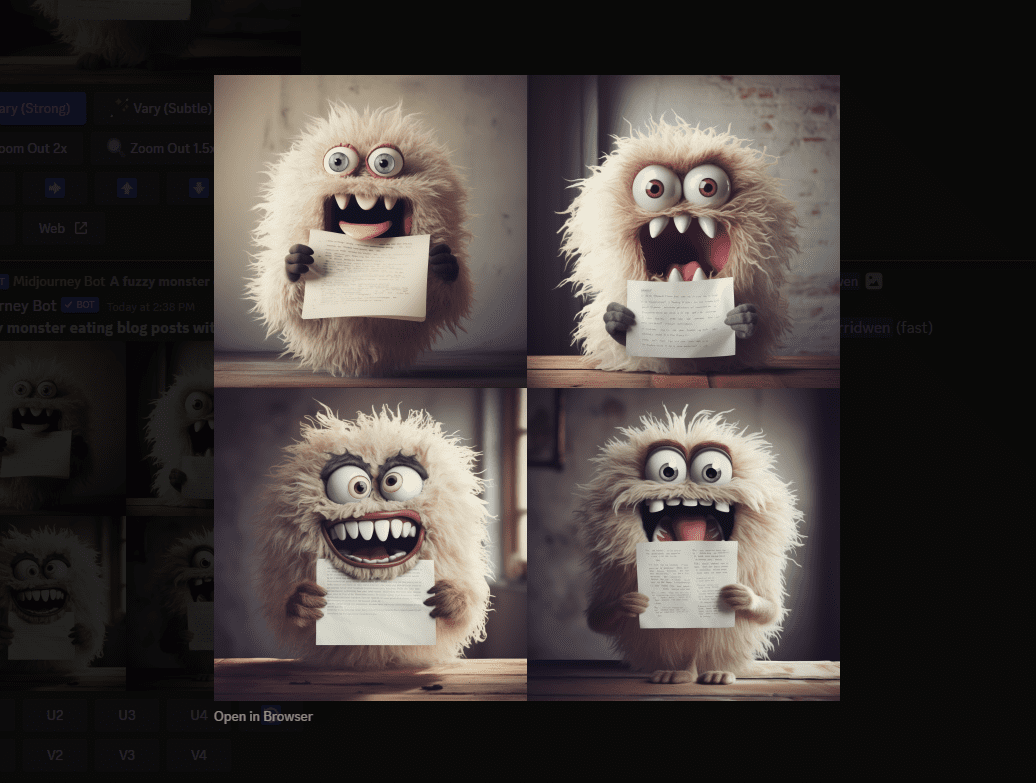





As you can see, AI is still not perfect – it has its quirks. The monster in the bottom left corner didn’t quite get the paper into his mouth! But you have three other variations you can work with to see which one resonates with your audience.
With Midjourney, you can also choose which region of the photo you want to vary.
Or you can simply use two or three different prompts to get entirely new images to try.
Let’s go with the blog post theme we used for our fuzzy monster image.
This time, let’s go in a different direction and use the prompt: “Imagine a hedgehog writing a letter to a friend.”






Both photos convey similar ideas but in different ways. Through A/B testing, you can see which image/copy pairings are the most engaging for your audience.
If you’re focused on local SEO, you can use AI to generate images that resonate with your local audience.
Not only can you optimize your content for local keywords and use local language, but you can also add imagery that speaks to your audience.
While AI can be a useful tool for localized content and for SEO in general, it’s important to remember that it can be biased.
Additionally, it’s worth considering that AI-generated art takes compensation and jobs away from human creators.
While AI can provide innovative solutions and efficiency, it’s crucial to balance technological advancements with the ethical implications and impact on the creative industry.
So, create AI images with caution. The last thing you want to do is offend or alienate your target audience.
But when used with the right approach, you can leverage AI image generation to enhance your SEO efforts and provide your audience with unique content.
More resources:
Featured Image: tete_escape/Shutterstock
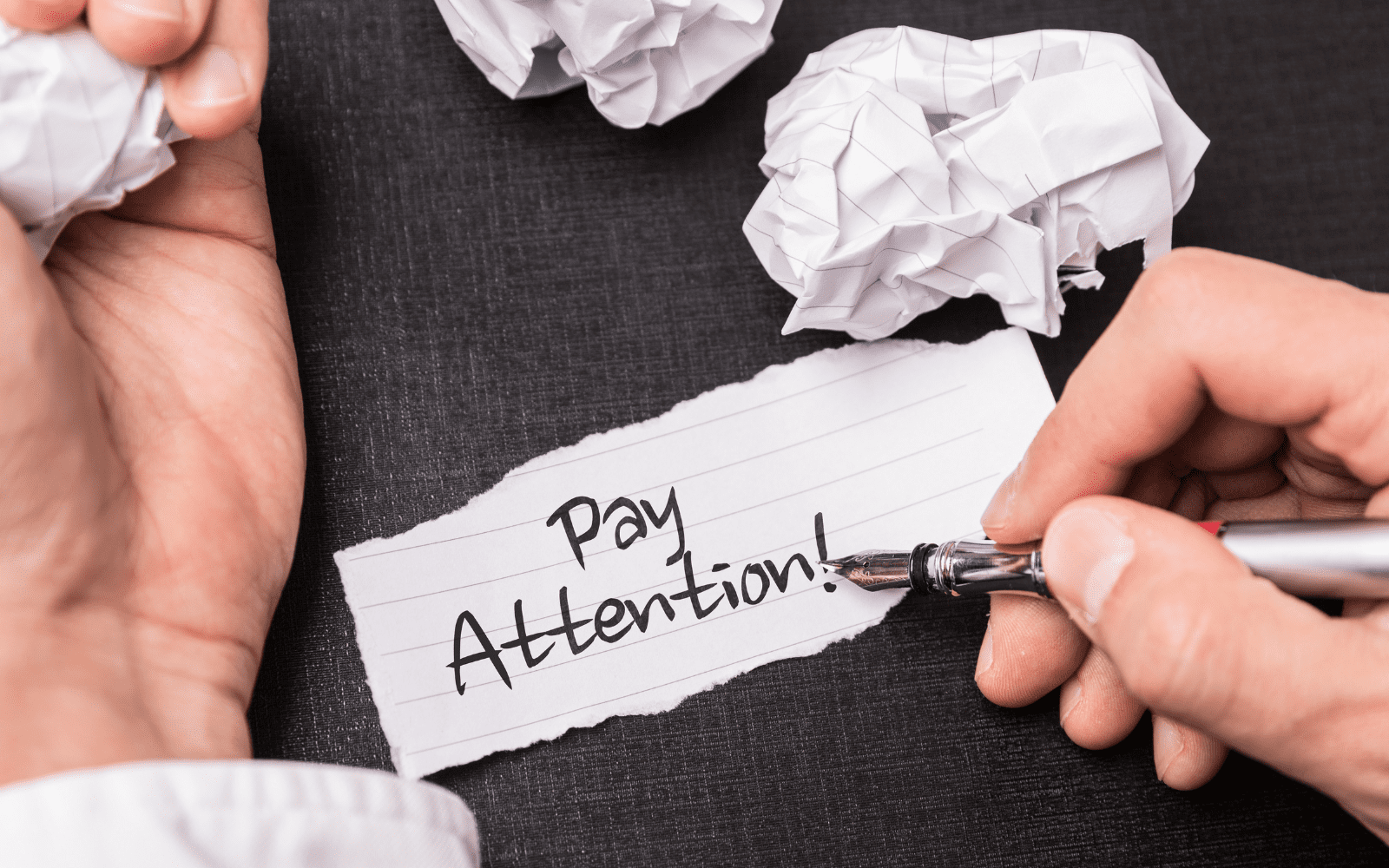



As digital marketers and brands everywhere struggle for user attention online, the headline is perhaps one of the most important tools at our disposal.
And though crafting a perfect headline might sound easy, there are many considerations that go into getting it right.
To help your content creation, we’ll uncover the secrets of writing headlines that people actually want to click – and that will drive traffic to your content.
We’ll look at the significance of the headline and some common mistakes people make before diving into 10 tips for writing headlines that deliver.
Let’s get started.
In the world of content marketing, the headline reigns supreme.
Your headline is the first point of interaction a reader has with your piece of content, and it often determines whether or not someone decides to click through and learn more, or to continue scrolling and potentially never think of your brand again.
Content marketing is more competitive than ever.
Users are producing 70 million new posts per month on WordPress alone – and with so many brands and individuals creating so much content, it’s a struggle to even get your headlines in front of people.
But once they see it, it’s imperative that your headline compels them to engage further.
That means knowing how to craft a strong headline, which is easier said than done. Consider that 90.63% of content gets no traffic from Google – and that can be at least partially attributed to poor headlines.
A good headline will make you stand out from the crowd, increase your chances of drawing in more readers, and ultimately lead to more customers.
In an ideal world, you want to attract readers while offering value, accurately representing your content, and aligning with search intent.
By putting readers first and keeping SEO best practices top-of-mind, you can strike the right balance.
Let’s dive into a few specific reasons why the headline is so important.
As we discussed above, the headline is the first thing a reader sees, and it lets them know what they can expect from you.
According to Copyblogger, on average, eight out of 10 people will read a headline, while only two out of 10 will then go on to read the content.
You’ve got one shot to make an impression, so you’d better get it right.
Search is the single largest online traffic source, and this makes it an incredibly powerful tool for reaching new audiences.
A well-optimized headline can help search engines like Google understand what your content is about and help it gain higher rankings in search engine results pages (SERPs), boosting your visibility with searchers.
While newer than search, social media is an important mechanism for driving traffic to your content.
By writing solid headlines that pique people’s attention and drive engagement, your content will see more clicks and more shares, driving earned engagements.
Strong headlines don’t just create a positive impression with users; they can, over time, positively impact your brand’s reputation.
If readers know they can come to you for quality headlines that grab their attention and accurately represent the content they’re going to read, they will naturally develop trust and admiration for your brand.
Ah, the age-old question: Should you cater your headlines primarily to search algorithms, or living, breathing humans?
The answer, of course, is a bit of both. In writing a strong headline, finding a balance between user-friendliness and SEO is crucial.
Let’s explore a few reasons why this matters:
When writing a headline, you should be prioritizing the users who will make up your audience. After all, the headline’s primary goal is to capture people’s attention, and encourage them to read more.
And people are more likely to engage with content that aligns with their needs, interests, and emotions.
If it doesn’t resonate with them, they won’t click through – and your efforts will be for naught.
On the other hand, if your headline isn’t search engine friendly, the chances of it being seen are diminished.
That’s why SEO is so important; it helps ensure that users will actually get the chance to discover your content when they’re searching.
Optimizing your headline and including relevant keywords can help you gain visibility in the SERPs, leading to more clicks.
With developments in technology and the rise of AI, search engines have become extremely good at understanding user intent.
Today, sites like Google are able to decipher the context and quality of content without relying on exact keyword matches.
Because of this and how search algorithms have evolved, writing for users first is often the best way to write for search engines.
Google Discover, which is a section of Google Search that shows users recommended content based on their interests and activity, is becoming a much more prominent source of traffic.
As with other places online, headlines are the first thing users will see on Google Discover – so it’s all about making the most of your brief opportunity.
By crafting engaging headlines that are clear, concise, and timely, you could turn Google Discover into a significant traffic source for your business.
One common question people ask when crafting headlines is whether the H1 headline and meta title should be the same.
For context: Your H1 headline is the on-page title that people will see when they click through to your content, and the meta title is what appears on the SERPs when somebody conducts a search.
And while it’s not necessary for your H1 headline and meta title to be the same, you should always remember to aim for consistency.
In a perfect world, your meta title and H1 are as similar as possible, so that you provide a consistent user experience – and readers know exactly what they’re getting into.
However, if you need to tweak either one slightly – perhaps optimizing the meta title with additional keywords, or changing your H1 headline to better suit the flow of your content – you should feel free to do so.
Just make sure both are clear and relevant to your content, and when the user clicks through from the meta title, they land on the content they expect to find.
The safest strategy is to keep them similar, but make slight differences where needed to optimize for each channel.
Before looking at tips for creating powerful headlines, let’s look at some common mistakes you should strive to avoid.
Popular on social media, clickbait headlines are designed to elicit curiosity and provoke users into clicking.
They often use outrageous premises in order to target people’s curiosity or promise to reveal something shocking and never-before-seen.
Some examples of what a clickbait headline might look like:
While these might be good at encouraging people to click, they typically misrepresent the actual content and don’t deliver authentic value.
In this way, clickbait can really hurt your credibility over the long term, disappoint your users, and erode trust in your brand.
We know it’s important to include relevant keywords in your headline so that they can rank higher on search engines – but there’s such a thing as going too far.
Throwing as many keywords as you can into a headline is known as keyword stuffing, and it can deter users and even be penalized by search engines.
Some examples of what a keyword-stuffed headline might look like:
Prioritizing search engine ranking over the user experience might sound like a good idea, but search engines are smart enough to notice – and it could do long-term damage to your brand and rankings.
You want your headlines to be easily understandable by your target audience and the general reader – and that means making your language straightforward and accessible.
Unless you’re specifically creating content only for a niche audience of experts and aren’t interested in reaching a broader group of readers, we would not recommend using words and phrases or terminology that is unfamiliar to the average person.
Here are some examples of headlines that use confusing jargon:
This perhaps goes without saying, but do your best to ensure your headline includes correct punctuation and grammar.
It’s totally normal (and okay!) to make mistakes, but we recommend double-checking for any errors before publishing your headline, as they can hurt your credibility and lead readers to doubt your expertise.
Here’s an example of headlines that feature noticeable errors:
Now, it’s time to dive into some tips for creating headlines that people will want to click on.
As internet users, we know all too well that most readers are simply skimming through content at a glance.
Between short attention spans and limited space to play (in areas like search results and social feeds), overly long headlines are not the way to go – they’re often either ignored or cut off.
For this reason, it’s imperative that you keep your headlines concise and to the point. As a best practice, we recommend trying to keep your headlines somewhere between 50 and 60 characters so they’re not cut short.
So, instead of this:
You want something more like this:
Not all audiences are created equal or have the same preferences.
It’s important to cater your headline to the specific audience you’re trying to reach, and align with their cultural touchpoints. This might change based on your audience’s geography, demographics, interest areas, or more.
For example, while you might want to emphasize subtlety and sophistication for a UK audience, you might leverage bolder, more flamboyant headlines to reach an American readership.
Here are some examples of how that might look in practice:
What drives you, as a reader, to click on a headline and read more?
I’m willing to bet that you’re more likely to take the time to engage with content if it speaks to a problem you’re facing, a question you might have, or a specific need you’re experiencing.
Powerful headlines are those which identify something your target audience is interested in, and then position your content as a solution or pathway to that interest.
An example of what that might look like:
You might already know about the 5Ws, which are a well-known principle among writers and journalists.
The idea is that when writing something, you should include the 5Ws – who, what, when, where, and why – as early as possible, to provide people with the necessary information.
When creating headlines for digital marketing and social media, we don’t often have much space. So, you might want to focus on the most critical three: who, what, and why.
This doesn’t necessarily mean you need to include specific words for each of these. It simply means making it clear who your content is for, what the premise of your content is, and why they should engage with it.
An example of a headline that considers the 5Ws:
The “4 U’s” is another useful technique to help you craft great headlines. The idea is that every headline you create should incorporate these 4 U’s:
It isn’t always possible to incorporate all four of these elements in one short headline, so a best practice is to strive to include at least two of them. This will make the headline much stronger than it would be otherwise.
Here are some examples of what this looks like:
Ever noticed how many listicles there are floating around the internet? Feel like you’re seeing a lot of numbered headlines lately? It’s true – and for good reason.
Research from Buffer and CoSchedule found that list posts are the most highly shared kind of headlines on social media.
Why? They’re easily skimmable; they carry the promise of quick tips and pointers; and they leave a little bit of room for curiosity – what could those 10 tips be?!
Utilizing numbered lists is a great way to reach today’s busy internet users and let them know exactly what you’re going to provide for them.
And here’s a hot tip: According to BuzzSumo, the most engaging number to use in a list post headline is 10, followed by five and 15.
Here are two examples of strong numbered list headlines:
Just like the best content appeals to the emotions of its readers, the same is true for headlines.
A headline that makes you laugh, touches your heart, surprises you, or piques your curiosity can help encourage you to take action and learn more.
Our emotions propel us to action in all areas of our life, and they’re a useful tool for content marketers.
So, keep these ideas top of mind as you craft your headlines. How can you elicit an emotional response from people quickly – whether that’s empathy, shock, or even anger?
Some examples:
Using powerful adjectives and verbs can go a long way in encouraging people to click your headlines.
Descriptive and powerful words can help connect with people’s emotions and create a sense of urgency to take action – important things we have already touched on.
Examples of impactful words are terms like “essential,” “must-have,” “secret,” “surprising,” and so on.
You want to focus on getting people excited about your content and making them feel like they’re missing out on something big if they don’t click through.
Here are some examples:
The question is another tried-and-true technique for compelling headlines. Why?
Well, think about it. When you’re confronted with a question, the first thing you do is consider what the answer might be. By asking a question in your headline, you’re inviting readers to think about something and creating an incentive for them to find the answer.
You’re also making it clear that they will find the answer – or at least an exploration of the topic – within your content.
The other great thing about questions is that they allow you to tap into trending conversations, giving you an edge of timeliness and zeroing in on what your audience cares about right now.
Here are two examples:
Don’t forget to regularly A/B test your headlines to stay on top of which approaches, phrases, terms, and tactics are resonating best with your audience.
This will help you optimize them over time so that you can ensure you’re getting the most juice from the squeeze.
Writing a great headline is no easy feat.
It’s a delicate balancing act that requires a good grasp of the data, intimate knowledge of your audience, an awareness of cultural nuances, and a lot of creativity.
Next time you’re crafting a headline, try leveraging some of the information we’ve shared above. This should help you reach readers where they are, and start driving more traffic to your content!
More resources:
Featured Image: Gustavo Frazao/Shutterstock
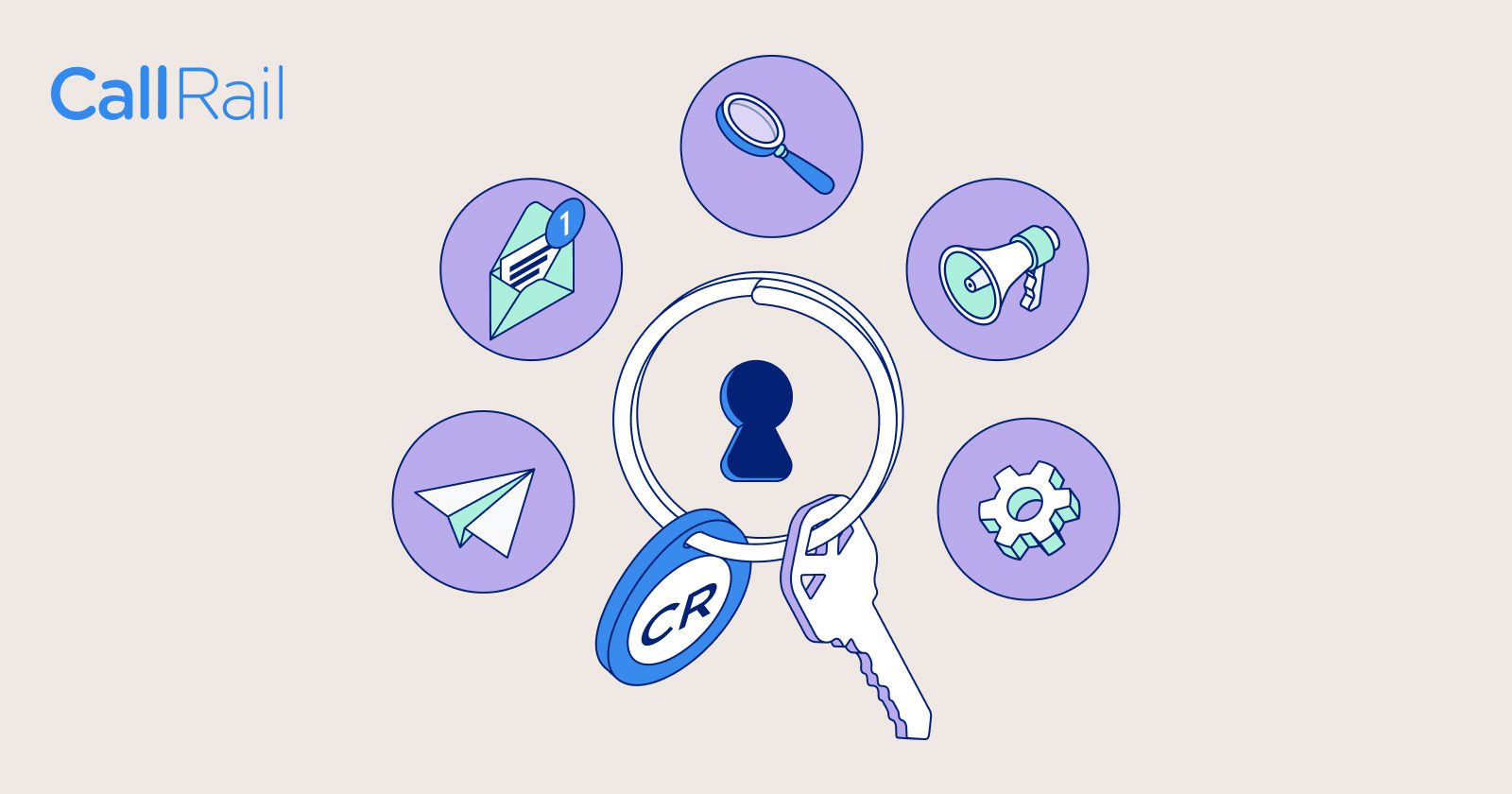



More specifically, advances in AI-powered speech recognition present exciting new opportunities for businesses.
For instance, with CallRail’s Conversation Intelligence, you can get the most important insights faster to proactively address your customers’ concerns and make smarter business decisions.
By turning your conversations into easy-to-act-on data, this technology takes you directly to the source for information, ensuring your audience gets exactly what they need from you.
Want to learn more about how conversation intelligence can fuel your strategy? Download CallRail’s new ebook.
In the meantime, let’s dive into three of the ways you can start using AI to your advantage.
One of the key ways AI has revolutionized SEO is by improving the way businesses conduct research.
Now, with the power of AI research tools, you can process vast amounts of data and identify patterns and insights that would be impossible to uncover manually.
For instance, you can use AI monitoring and listening tools to:
Start by using conversation intelligence to analyze the language your customers and prospects use during calls to discover what they really want.
With tools like CallRail’s Call Tracking, you can gain even more valuable insights into your customers’ journey.
Examine your web visitor tracking data to identify which campaigns, keywords, and ads your leads interacted with along their journey, making it much easier to know what’s actually working.
Get the ebook to learn more about how calls can boost your marketing efforts.
Another advantage of AI technology is that you can leverage the data you collect to enhance your search discoverability.
With conversation intelligence, you can automatically identify key terms spoken in phone calls and map their frequency to spot emerging trends quickly.
You can then see how the most frequently spoken terms and phrases on your calls compare to the keywords you target for your marketing campaigns and use this data to boost your SEO and keyword bidding strategies.
Compare what your customers say they want to what your business actually offers, and fill in any gaps between the words you use to market your business and the terms your customers are using.
By using AI to analyze the top trends in your customer calls, you’re able to spot new opportunities for your business and better serve the needs of your audience.
Find out more about how to use AI to turn your calls into a competitive advantage.
Although using AI for content generation is nothing new, only recently have marketers been able to refine their use of the technology for more authentic results.
In the past, there’s been a negative stigma associated with AI writing – for one, the data that some AI models use is outdated, but also, AI tools have been known to plagiarize content from other websites.
Today, however, there are more advanced AI tools for content generation, which allow SEO professionals to create higher-quality content that ranks well in organic search.
Plus, with insights from conversation intelligence, you can ask an AI content generation tool, like ChatGPT, to generate content topics or even a rough draft based on popular keywords and phrases your customers are using.
Then, once you have something to work with, you can go in and add your human touch to make sure the content really resonates with your target audience.
Try this:
Learn more about how to use call data to improve your content strategy in CallRail’s latest ebook.
With recent advancements in AI technology, marketers are able to make significant improvements in their strategies – from research, to search and SEO discoverability, to content creation.
Are you ready to start leveraging AI to enhance your marketing results?
Learn more in CallRail’s new ebook, Unlock your marketing potential: Use AI to turn your calls into a competitive advantage, and try these services today, 100% risk-free for 14 days!




Your Instagram aesthetic is the first thing potential followers and prospects notice when they check out your profile — here’s how to get it right.




Instagram is still growing fast. These Instagram statistics prove just how valuable the network is to your business.




Want to reach an engaged professional audience? You can use LinkedIn ads to promote your brand, increase traffic, find new leads and more.




The most recent image sizes for different social media networks, including Instagram, X (f.k.a. Twitter), Facebook, LinkedIn, TikTok, and more.